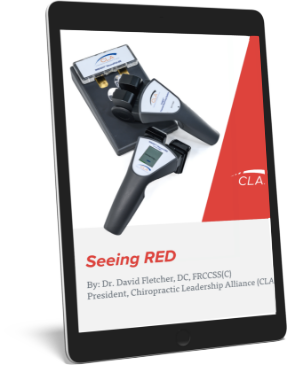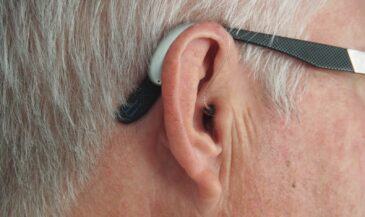By Dr. Christopher Kent
In a previous column [1] reasons for our limited marketshare were discussed. There is little doubt that credible research, demonstrating the value of chiropractic’s contribution to human wellbeing, is the key to ensuring the profession’s longterm presence in the marketplace.
Regrettably, chiropractic political bodies have attempted to address the marketshare challenge with litigation. The results have been disastrous. Three suits. Three losses.
The loss with the greatest potential for damage is the Trigon suit. United States District Judge James P. Jones ruled, “I find that there are no genuine issues of material fact remaining for trial and that Trigon is entitled to judgment in its favor. As stated in the opinion, summary judgment is a tool designed for ‘weeding out claims and defenses that have no factual basis’.” [2]
Instead of cutting their losses, and limiting the effects of this adverse ruling to one district, the case was appealed, and lost again at the Circuit Court level. Finally, the US Supreme Court refused to hear the case. Now, millions later, we have a precedent that essentially affirms the ability of insurers to discriminate against chiropractors. The case never even went to trial.
In the second case, the Medicare suit, the judge used even harsher language in granting another summary judgment: The Court ruled, “doctors of medicine and osteopaths may perform any service for Medicare beneficiaries as long as that service is performed in the state where they are licensed…The structure of section 1395x(r) also leads the Court to the conclusion that manual manipulations of the spine to correct a subluxation performed by a doctor or osteopath are covered under Medicare Parts B and C. To decide otherwise invites an absurd result…” [3]
Despite the Trigon loss, and the District Court ruling that the result sought is “absurd,” the ACA intends to move forward with yet another costly appeal. Their spin doctors have talked about showing that chiropractors “aren’t wimps” and quote Teddy Roosevelt on the glories of battle. The cash cow lives on, and will continue to thrive as long as the monthly credit card debits are authorized. The profession is still waiting for an accounting on the money.
The latest loss is at the state level. On Monday, December 6, 2004, the San Diego Superior Court granted American Specialty Health Plans of California, Inc. and American Specialty Health Networks, Inc. summary judgment on key claims filed by the California Chiropractic Association (CCA) in 2001. [4]
For those unfamiliar with ASHN, they exclude chiropractors who use objective clinical assessments such as xray spinography, sEMG, etc. If you offer longterm wellness care…forget it. ASHN is about shortterm treatment of a narrow range of musculoskeletal disorders. And for those into modalities, forget the big therapy bills. They only pay on a ‘per diem” basis, not by the number of modalities.
In short, ASHN is disliked by DCs on both sides of the aisle subluxation/wellness and NMS/pain treatment focused docs alike.
The Court held that CCA failed to produce any evidence that the utilization management practices were “contrary to generally accepted professional/medical standards” or “arbitrary.” The Court determined that there was no reason that it should interfere with ASH Plans’ or ASH Networks’ provider reimbursement schedules, denying both injunctive and monetary relief on these claims.
Three lawsuits. Three losses on summary judgments without even a trial. Why? There are several reasons:
1. Not everything bad is illegal. It is legal for third party payers to negotiate with providers. The terms of participation are voluntary. Courts will enforce valid contracts in the absence of defenses. If you sign a contract with lousy terms, you’re stuck with them. “It’s just not fair” isn’t an adequate defense if YOU knowingly agreed to the terms. We live in a free market economy.
2. If you want to define yourself as a “physician,” you must live with the consequences. MDs and DOs are plenary physicians. That means they have unlimited licenses. In most states, they can do anything a limited licensee can do. That’s the essence of Judge Penn’s ruling in the Medicare case. If you want to exclude them, you must define yourself as something other than a limited medical practitioner, and be in a separate provider group.
Are there solutions? Yes!
1. To quote weightloss guru Susan Powter, “Stop the insanity.” Stop squandering the profession’s limited resources on questionable lawsuits.
2. Support legislative solutions that establish chiropractic as a profession separate and distinct from medicine, rather than a limited branch of medical practice.
3. Realize that litigation is not a substitute for building a solid base of subluxation/wellness research focusing on the benefits of chiropractic care for all persons, not just those who have a musculoskeletal pain syndrome.
The words of physiologist I.M. Korr, [5] seem appropriate. Even though not directed to chiropractors, they ring true:
“There are misapprehensions about the source of your strength. Your profession appears to believe that its strength is to be found more in the stamps of approval by selfappointed magistrates of medicine…As a result, you often acted as though you believed your strength is to be nurtured by mimicry, by cloaks of protective coloration, by compromise of principles, by organized compliance, by appeasement, and by adaptation to what is prescribed for you by organizations of another profession…Recent events loudly proclaim the futility of this approach.”
Let’s make a commitment to use our limited resources wisely.
References
1. A challenge and three myths. http://www.worldchiropracticalliance.org/tcj/2004/sep/kent.htm
2. American Chiropractic Association v. Trigon Healthcare, Inc., et al. Case No. 1:00CV00113.
3. American Chiropractic Association v. Tommy G. Thompson. Civil Action No. 982762.
4. ASHN News Release. http://www.ashcompanies.com/News/Default.aspx?y=2004&a=149
5. Korr IM: “The function of the osteopathic profession: a matter for decision.” Keynote address to 63rd annual convention of the American Osteopathic Association. July 13, 1959. Chicago, IL.






























































































































































